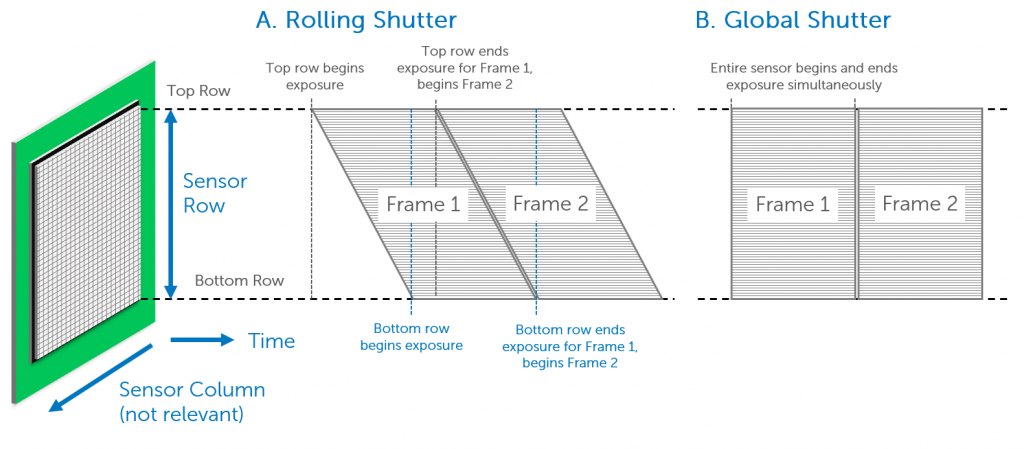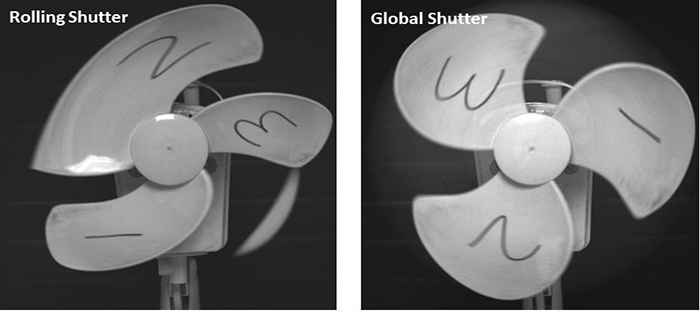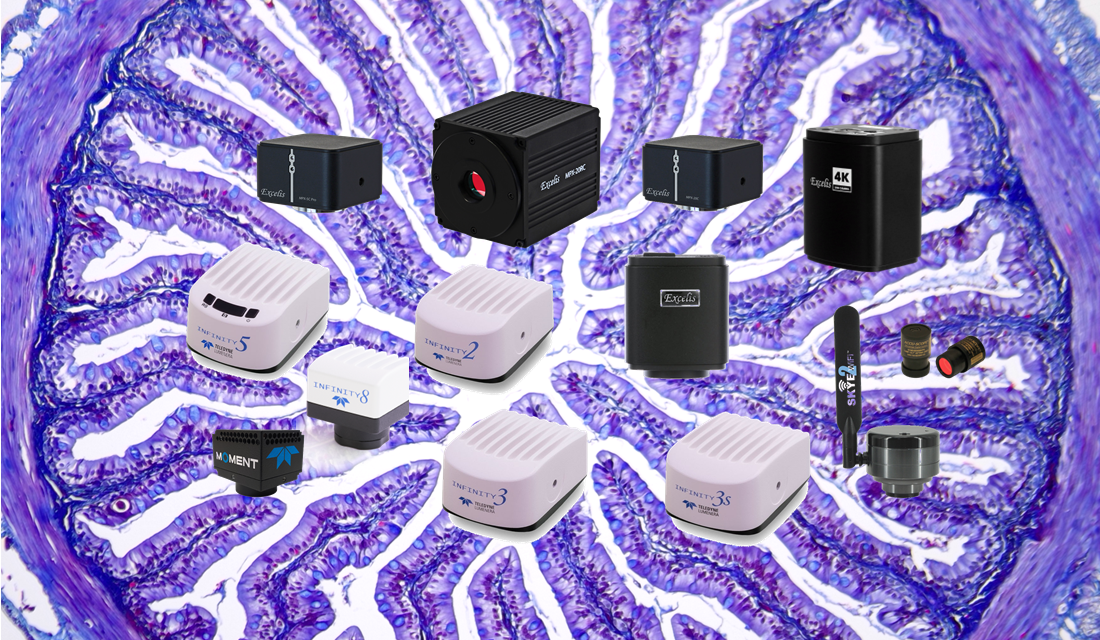With microscopy cameras, the term shutter refers to the way the camera sensor transfers the data off the chip. Global shutters read out the data from the entire sensor at the same time and this provides a snapshot of the sample at a single point in time (refer to Figure 13). A rolling shutter reads off the data row by row, or by alternating rows. Since each row takes time to read off, the image may show the effect of the slight time delay, resulting in a smearing of the image (refer to Figure 14). It is important to note that the shutter type is built into the sensor by the sensor manufacturer and not an accessory.


The difference between rolling and global shutter is visualized in captured images. The caveat is that when viewing live images, framerate is more important than the type of shutter.
Here is our recommendation:
- Static, non-living or dead samples (basically, not moving), you can choose a camera with either a rolling or global shutter, in which case base your purchase decision on other camera parameters.
- Moving (this includes scanning or stitching) or living samples, a camera with a global shutter camera will serve you better.
- If live image viewing is your goal (e.g., instruction, inspection, etc.) or if your sample has a high degree of motion (e.g., flagella, swimming, etc.), choose a camera with a fast framerate.
Tune in next time for our next post in the series when we discuss connectivity to your camera (i.e., how you interface with the camera) and data transfer.



